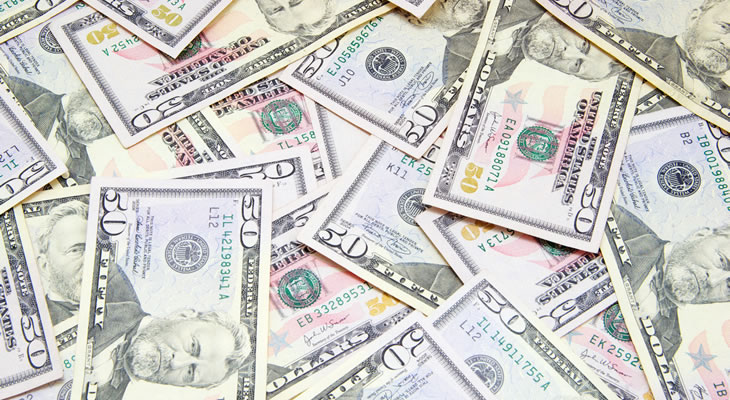The Pound Sterling to US Dollar (GBP/USD) exchange rate continued to soften after US consumer sentiment rocketed to an 11-year high in January.
US citizens enjoyed lower fuel prices as a result of the recent tumble in oil, coupled with a brighter labour market outlook.
Industry expert Ryan Wang stated: ‘The main positives for consumer sentiment have been an improving labour market and falling gasoline prices. Consumers are benefiting from the increased real disposable income from lower energy prices.’
Earlier… The Pound Sterling to US Dollar (GBP/USD) exchange rate began to fall after the release of US Consumer Price Index (CPI) figures on Friday.
US inflation fell from 1.3% to 0.8% in the month of December on the year, slightly above 0.7% forecasts.
However, the measure that excludes food and energy prices failed to remain at 1.7% as economists had predicted, instead dropping to 1.6%.
Earlier… The Pound Sterling to US Dollar (GBP/USD) exchange rate recorded gains during Friday’s European trading ahead of highly influential US data.
The US Consumer Price Index (CPI) scheduled for release later in Friday’s session is forecast to see a decline in inflation from 1.3% to 0.7% on the year in December. However, the measure excluding food and energy has been predicted to remain at 1.7%.
The US Dollar exchange rate has been bullish against other currency majors in recent months as investors’ price in a Federal Reserve rate hike in the near future. However, Thursday saw US producer prices fall at their sharpest rate in over three years as energy costs tumbled.
Economist Gus Faucher stated: ‘That makes the Fed’s job more difficult. We expect inflation to slow… the Fed needs to be more cautious about raising interest rates.’
In addition, Thursday saw Continuing Claims and Initial Jobless Claims fall out of line with forecasts.
Initial Jobless Claims rose by 316K in the week through January 10th, a jump above the 290K prediction. In addition, Continuing Claims resided at 2424K in the week ending January 3rd, defying optimistic forecasts of only 2400K.
The Federal Reserve Bank of Philadelphia’s Manufacturing Index also declined quite dramaticall,y from December’s 24.5 to only 6.3 in January—the slowest pace in 11 months. However, the Federal Reserve’s Beige Book released on Wednesday suggested that manufacturing had in fact increased between November and December.
Economist Steve Blitz stated: ‘Because there are no real signs of domestic declines in demand, we are going to presume that this drop in the Philly Fed survey mostly reflects, on the first order, manufacturers along the Schuylkill holding off a bit as they wait to see where the decline in global growth, a stronger Dollar, and lower oil prices settle out in terms of the collective impact.’
‘The US is a global economy and a good enough number of these manufacturers surveyed every month export their products and compete with imports.’
Meanwhile, the UK is experiencing a quiet week for data leaving movement in the Pound Sterling to US Dollar (GBP/USD) exchange rate largely determined by global developments, UK politics, and US data.
Pound Sterling to US Dollar (GBP/USD) Exchange Rate Forecast
The Pound Sterling to US Dollar (GBP/USD) exchange rate is likely to fluctuate on the release of US data later in the afternoon. If US inflation increases or remains strong, the US Dollar could be offered some stability. Furthermore, the ‘Buck’ could be offered some strength if confidence figures increase as forecast.
The University of Michigan Confidence index is expected to rise from 93.6 to 94.1 in January.
However, next Wednesday UK Unemployment and Employment Change figures are scheduled for release, as well as Bank of England (BoE) meeting minutes which could see massive GBP/USD movement.
The Pound Sterling to US Dollar (GBP/USD) exchange rate is presently trending in the region of 1.5226 with market movement of +0.30%. The US Dollar to Pound Sterling (USD/GBP) exchange rate resides at 0.6571.

